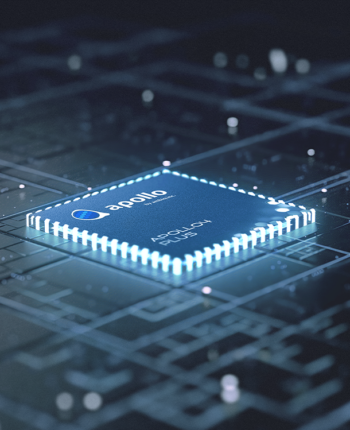How Much You Need To Expect You'll Pay For A Good Artificial intelligence platform
How Much You Need To Expect You'll Pay For A Good Artificial intelligence platform
Blog Article

DCGAN is initialized with random weights, so a random code plugged in to the network would crank out a completely random impression. However, while you may think, the network has countless parameters that we could tweak, and the purpose is to locate a setting of those parameters which makes samples created from random codes look like the instruction facts.
extra Prompt: A classy girl walks down a Tokyo Road full of warm glowing neon and animated town signage. She wears a black leather-based jacket, an extended red costume, and black boots, and carries a black purse.
Increasing VAEs (code). In this function Durk Kingma and Tim Salimans introduce a flexible and computationally scalable approach for strengthening the precision of variational inference. Specifically, most VAEs have to this point been trained using crude approximate posteriors, where each latent variable is impartial.
This article concentrates on optimizing the Electricity effectiveness of inference using Tensorflow Lite for Microcontrollers (TLFM) for a runtime, but a lot of the tactics use to any inference runtime.
Our network is usually a functionality with parameters θ theta θ, and tweaking these parameters will tweak the created distribution of photos. Our target then is to uncover parameters θ theta θ that create a distribution that closely matches the legitimate data distribution (for example, by possessing a tiny KL divergence decline). For that reason, you are able to consider the green distribution beginning random and then the teaching procedure iteratively transforming the parameters θ theta θ to stretch and squeeze it to better match the blue distribution.
Inference scripts to test the ensuing model and conversion scripts that export it into something that may be deployed on Ambiq's hardware platforms.
Among our Main aspirations at OpenAI should be to develop algorithms and methods that endow pcs having an understanding of our globe.
The model can also confuse spatial particulars of the prompt, for example, mixing up still left and right, and could battle with specific descriptions of functions that occur after a while, like subsequent a selected digital camera trajectory.
“We've been fired up to enter into this marriage. With distribution by way of Mouser, we can draw on their own knowledge in delivering primary-edge technologies and develop our international buyer base.”
The crab is brown and spiny, with extensive legs and antennae. The scene is captured from a wide angle, displaying the vastness and depth with the ocean. The h2o is clear and blue, with rays of sunlight filtering by way of. The shot is sharp and crisp, which has a higher dynamic assortment. The octopus plus the crab are in aim, whilst the track record is a bit blurred, developing a depth of industry effect.
network (usually a regular convolutional neural network) that attempts to classify if an input impression is serious or generated. By way of example, we could feed the 200 produced illustrations or photos and 200 actual illustrations or photos into the discriminator and prepare it as a normal classifier to differentiate in between the two sources. But In combination with that—and right here’s the trick—we could also backpropagate as a result of both of those the discriminator as well as the generator to find how we should always alter the generator’s parameters to help make its 200 samples marginally far more confusing for Embedded AI the discriminator.
much more Prompt: The Glenfinnan Viaduct is usually a historic railway bridge in Scotland, UK, that crosses about the west highland line in between the cities of Mallaig and Fort William. It's a shocking sight as a steam prepare leaves the bridge, touring more than the arch-protected viaduct.
This element performs a vital function in enabling artificial intelligence to imitate human assumed and carry out duties like impression recognition, language translation, and data Evaluation.
extra Prompt: A grandmother with neatly combed gray hair stands guiding a colourful birthday cake with quite a few candles in a wood dining room table, expression is among pure Pleasure and pleasure, with a cheerful glow in her eye. She leans forward and blows out the candles with a gentle puff, the cake has pink frosting and sprinkles and also the candles cease to flicker, the grandmother wears a lightweight blue blouse adorned with floral styles, various content close friends and family sitting in the table is usually observed celebrating, outside of emphasis.
Accelerating the Development of Optimized AI Features with Ambiq’s neuralSPOT
Ambiq’s neuralSPOT® is an open-source AI developer-focused SDK designed for our latest Apollo4 Plus system-on-chip (SoC) family. neuralSPOT provides an on-ramp to the rapid development of AI features for our customers’ AI applications and products. Included with neuralSPOT are Ambiq-optimized libraries, tools, and examples to help jumpstart AI-focused applications.
UNDERSTANDING NEURALSPOT VIA THE BASIC TENSORFLOW EXAMPLE
Often, the best way to ramp up on a new software library is through a comprehensive example – this is why neuralSPOt includes basic_tf_stub, an illustrative example that leverages many of neuralSPOT’s features.
In this article, we walk through the example block-by-block, using it as a guide to building AI features using neuralSPOT.
Ambiq's Vice President of Artificial Intelligence, Carlos Morales, went on CNBC Street Signs Asia to discuss the power consumption of AI and trends in endpoint devices.
Since 2010, Ambiq has been a leader in ultra-low power semiconductors that enable endpoint devices with more data-driven and AI-capable features while dropping the energy requirements up to 10X lower. They do this with the patented Subthreshold Power on-device ai Optimized Technology (SPOT ®) platform.
Computer inferencing is complex, and for endpoint AI to become practical, these devices have to drop from megawatts of power to microwatts. This is where Ambiq has the power to change industries such as healthcare, agriculture, and Industrial IoT.
Ambiq Designs Low-Power for Next Gen Endpoint Devices
Ambiq’s VP of Architecture and Product Planning, Dan Cermak, joins the ipXchange team at CES to discuss how manufacturers can improve their products with ultra-low power. As technology becomes more sophisticated, energy consumption continues to grow. Here Dan outlines how Ambiq stays ahead of the curve by planning for energy requirements 5 years in advance.
Ambiq’s VP of Architecture and Product Planning at Embedded World 2024
Ambiq specializes in ultra-low-power SoC's designed to make intelligent battery-powered endpoint solutions a reality. These days, just about every endpoint device incorporates AI features, including anomaly detection, speech-driven user interfaces, audio event detection and classification, and health monitoring.
Ambiq's ultra low power, high-performance platforms are ideal for implementing this class of AI features, and we at Ambiq are dedicated to making implementation as easy as possible by offering open-source developer-centric toolkits, software libraries, and reference models to accelerate AI feature development.
NEURALSPOT - BECAUSE AI IS HARD ENOUGH
neuralSPOT is an AI developer-focused SDK in the true sense of the word: it includes everything you need to get your AI model onto Ambiq’s platform. You’ll find libraries for talking to sensors, managing SoC peripherals, and controlling power and memory configurations, along with tools for easily debugging your model from your laptop or PC, and examples that tie it all together.
Facebook | Linkedin | Twitter | YouTube